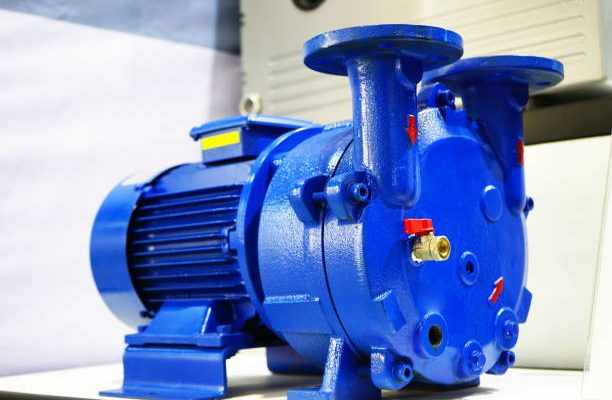Vacuum pumps have many uses and are essential to many modern devices. Vacuum pumps play an important role in many industries. They are used to create vacuums and can be found in everything from home vacuum cleaners to large industrial machines.
If you’re interested in learning about the different types of vacuum pumps available, be sure to check out this page on vacuum pumps from this collection. They offer a variety of vacuum pumps to suit different needs and applications in the realm of vacuum technology.
Here are the most common types of vacuum pumps:
Oil-Lubricated Rotary Vane Vacuum Pump
An oil-lubricated rotary vane vacuum pump is a type of vacuum pump that uses oil to lubricate the bearings and vanes in the pump. This vacuum pump is commonly used to evacuate air from containers or systems and is a popular choice for low- to medium-vacuum applications. Oil-lubricated rotary vane pumps are available in both single-stage and two-stage versions.
Dry Claw Vacuum Pumps
Dry claw vacuum pumps are high-performance rotary vane pumps designed to optimize the internal seal and guarantee a consistently high pumping speed. These exceptional pumps are ideal for various applications, including analytical instrumentation, printing, and medical equipment. Additionally, they offer several other benefits, such as low noise levels and minimal maintenance requirements.
Dry Screw Vacuum Pumps
Dry screw vacuum pumps are positive displacement rotary pumps that utilize two screws to draw in and compress the gas. A motor and mesh drive these screws together to pump gas smoothly without friction. Due to the lack of lubrication required, dry screw vacuum pumps can run for extended periods without requiring maintenance. They are typically used for high vacuum applications like those in the semiconductor industry.
Vacuum Booster Pump
A vacuum booster pump is a mechanical device that uses suction to draw air or other fluids through a system. The pump forces the air or fluid through, leaving a partial vacuum in the receiving chamber. Using check valves, the Booster can maintain a relatively steady vacuum on its output side while its input side exhausts into the atmosphere.
Dry-Running Rotary Vane Vacuum Pumps
Dry-Running Rotary Vane Vacuum Pumps are a type of rotary vane pump that can operate without lubrication. This makes them ideal to use where the pumped gases may be corrosive or otherwise unsuitable for traditional lubricated pumps. They are available in single and two-stage designs, with optional gas ballast valves for greater versatility.
Liquid Ring Vacuum Pumps
Liquid ring vacuum pumps are often used in industrial applications where there is a need to create or maintain a vacuum. They operate by trapping a liquid in a rotating ring and then evacuating the air from the space between the ring and the housing. This causes the liquid to be drawn into the pump and creates a vacuum. Common applications include papermaking, food processing, printing, and chemical production.
Scroll Vacuum Pump
A scroll vacuum pump is a rotary living-hinge pump that uses two opposed scrolls to trap and compress the fluid. As the scrolls rotate, they capture pockets of fluid and progressively move them towards the discharge port, where the fluid is exhausted. They are often used in applications where moderate vacuum levels need to be achieved, such as in HVAC systems.
Diffusion Vacuum Pump
A diffusion vacuum pump is a device that uses a moving piston or diaphragm to create a vacuum. The diffusion of molecules creates a vacuum through a porous membrane. The pump typically consists of two chambers, an evacuating chamber and a compressed chamber.
The piston or diaphragm is used to compress and evacuate the chambers alternately. As the evacuating chamber is compressed, molecules diffuse through the pores in the membrane into the compressed chamber. This decreases the pressure in the evacuating chamber, creating a vacuum. In research laboratories, diffusion pumps are often used to create high vacuums for experiments. They are also used in the industry for coating and heat treatment processes.




















